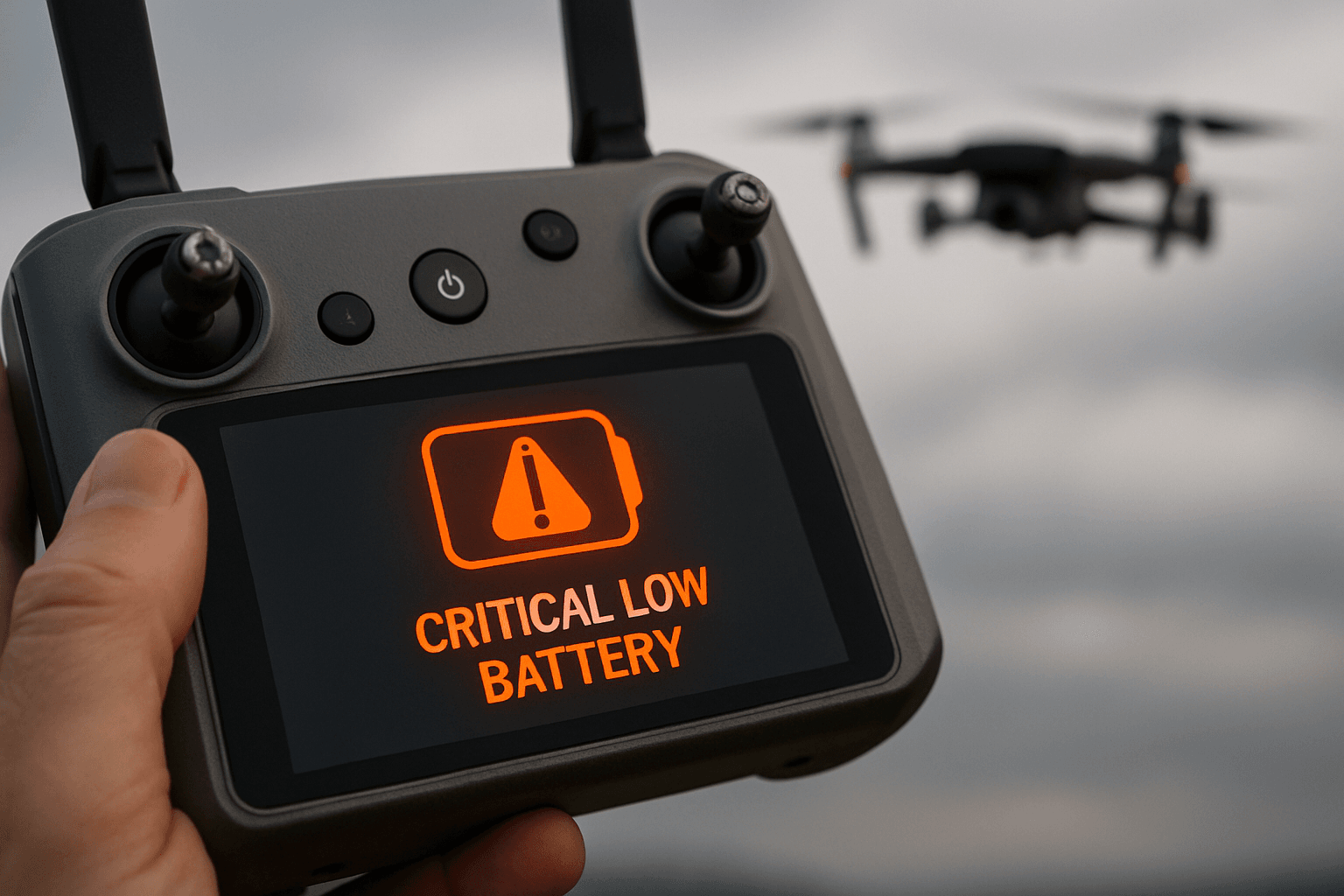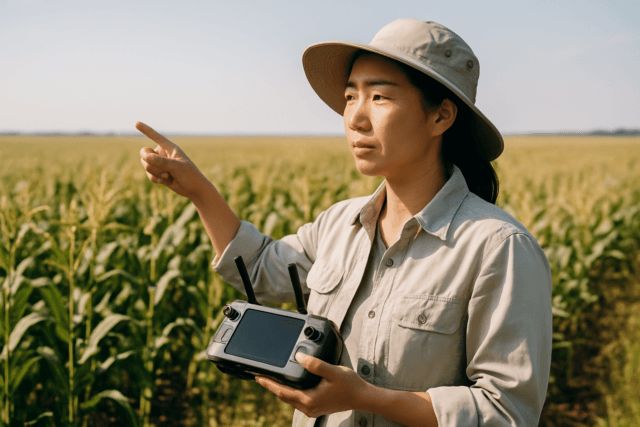A low battery warning on your drone can be a heart-stopping moment. Whether you’re a hobbyist capturing scenic landscapes or a professional relying on your drone for critical operations, understanding how to respond to this warning is essential for a safe and successful flight. This article dives deep into drone battery management, helping you understand the warning signs, best practices, and preventative measures to keep your drone soaring safely.
Understanding Drone Battery Warnings
What Triggers a Low Battery Warning?
A drone’s battery management system (BMS) constantly monitors battery voltage, current, and temperature. When the battery level drops below a pre-set threshold, the drone issues a low battery warning . This threshold is designed to give you enough time to safely land or return the drone to home .
Types of Warnings
Drone battery warnings usually come in stages :
- Initial Warning: This is your cue to start heading back or preparing for landing.
- Critical Warning: This indicates the battery is at a dangerously low level, and the drone might initiate an automatic landing . Ignoring this could lead to a crash.
How Are Warnings Communicated?
- Visual cues: Flashing lights on the drone itself .
- Audible alerts: Beeping sounds from the remote controller .
- On-screen notifications: Messages and battery level indicators in the flight app .
Immediate Actions When the Low Battery Warning Appears
Stay Calm
Panicking can lead to poor decisions. Take a deep breath and assess the situation calmly.
Assess the Situation
- Distance to Home: How far is the drone from the take-off point?
- Wind Conditions: Is there a headwind that will slow the drone down and consume more battery?
- Altitude: Is the drone at a high altitude, requiring more power to descend?
- Obstacles: Are there any obstacles in the flight path back to home?
Initiate Return to Home (RTH) or Manual Landing
- Return to Home (RTH): If the drone is far away or conditions are challenging, activate the RTH function . Ensure your RTH altitude is set high enough to clear any obstacles .
- Manual Landing: If the drone is close by and you have a clear landing spot, manually fly it back and land immediately .
Reduce Power Consumption
- Fly Smoothly: Avoid aggressive maneuvers, sharp turns, and rapid ascents or descents, as these consume more battery .
- Reduce Payload: If possible, reduce the drone’s payload by turning off unnecessary features like lights or cameras.
Preventing Low Battery Emergencies
Pre-Flight Checks
- Inspect Batteries: Check for any signs of damage, swelling, or leaks .
- Charge Batteries Fully: Ensure all batteries are fully charged before each flight .
- Check Battery Health: Use the drone’s app to check the battery’s health status and remaining charge cycles .
In-Flight Monitoring
- Keep an Eye on Battery Levels: Regularly monitor the battery level indicator in the flight app .
- Set Battery Level Alarms: Configure the app to provide audible alerts at specific battery percentages.
Battery Management Best Practices
- Avoid Deep Discharges: Don’t let the battery drain completely. Land when the battery reaches around 20% .
- Proper Storage: Store batteries at a 40-60% charge in a cool, dry place .
- Optimal Temperature: Avoid exposing batteries to extreme temperatures .
- Use the Right Charger: Always use the charger specifically designed for your drone’s batteries .
- Charge Cycles: Be aware that drone batteries have a limited number of charge cycles (typically 300-500) before they start to degrade .
Understanding Factors Affecting Battery Life
Weather Conditions
- Wind: Flying against the wind requires more power .
- Temperature: Cold temperatures reduce battery capacity .
- Humidity: High humidity can increase the drone’s weight and drain the battery faster .
Flight Style
- Aggressive Flying: Fast maneuvers and high speeds consume more power .
- Payload: Carrying heavy loads reduces flight time .
Battery Age and Health
- Charge Cycles: As batteries age, their capacity decreases .
- Storage Conditions: Improper storage can shorten battery life .
Drone Battery Management System (BMS) Explained
What is a BMS?
A Battery Management System (BMS) is an electronic system that manages and protects the lithium-based battery packs used in drones . It monitors various parameters to ensure safe and efficient operation.
Key Functions of a BMS
- Voltage Monitoring: Measures the voltage of each cell in the battery pack .
- Temperature Monitoring: Monitors the temperature of each cell to prevent overheating or undercooling .
- Current Monitoring: Measures the current flow to prevent overcurrent conditions .
- Cell Balancing: Ensures that all cells in the battery pack have equal voltage, maximizing the battery’s usable capacity and lifespan .
- Protection Mechanisms: Provides protection against overcharging, over-discharging, and short circuits .
How a BMS Improves Battery Life
By preventing overcharging, over-discharging, and overheating, a BMS significantly extends the lifespan and performance of drone batteries .
Safe Charging Practices
Choosing the Right Charger
Always use the charger that came with your drone or one specifically recommended by the manufacturer . Using the wrong charger can damage the battery or create a safety hazard .
Avoiding Overcharging
- Unplug Batteries: Disconnect batteries from the charger as soon as they are fully charged .
- Monitor Charging: Keep an eye on the charging process to prevent overcharging .
- Smart Chargers: Use chargers with automatic shut-off features .
Creating a Safe Charging Environment
- Cool and Dry: Charge batteries in a cool, dry, and well-ventilated area .
- Away from Flammables: Keep batteries away from flammable materials .
- Monitor Temperature: Ensure the ambient temperature is between 5-40°C (41-104°F) .
Safe Storage Practices
Optimal Charge Level
Store batteries at a 40-60% charge level for both short-term and long-term storage .
Temperature Control
- Moderate Temperatures: Store batteries at moderate temperatures between 10-25°C (50-77°F) .
- Avoid Extremes: Protect batteries from extreme heat and cold .
Safe Storage Locations
- Cool and Dry: Keep batteries in a cool, dry place away from heat sources and moisture .
- Fire-Resistant Containers: Use fireproof storage bags or containers designed for LiPo batteries .
Extending Battery Lifespan
Proper Maintenance
- Regular Inspections: Check batteries regularly for any signs of damage or swelling .
- Clean Terminals: Keep battery terminals clean and free of debris .
- Firmware Updates: Ensure the battery firmware is up to date .
Optimizing Flight Habits
- Smooth Flying: Avoid aggressive maneuvers and maintain steady flight patterns .
- Moderate Weather: Fly in moderate weather conditions to reduce battery strain .
Battery Cycling
- Regular Use: Use batteries regularly to maintain their health .
- Avoid Long Periods of Inactivity: If you don’t plan to use your drone for a while, discharge the battery to the recommended storage level .
What to Do with Old or Damaged Batteries
Proper Disposal
- Recycle Batteries: Dispose of old or damaged batteries at designated recycling centers .
- Discharge Before Disposal: Fully discharge the battery before disposal to minimize the risk of fire .
Recognizing Damaged Batteries
- Swelling: If a battery is swollen, it is damaged and should be disposed of immediately .
- Leaks: If a battery is leaking, handle it with care and dispose of it properly .
- Physical Damage: If a battery has physical damage, such as cracks or punctures, it should not be used .
Advanced Battery Technologies
LiPo vs. Li-Ion Batteries
- LiPo (Lithium Polymer): Traditional batteries with high energy density and lightweight design .
- Li-Ion (Lithium-Ion): More durable, charge faster, and are lighter than LiPo batteries .
Solid-State Batteries
Solid-state batteries are an emerging technology that promises higher energy density, improved safety, and longer lifespan .
Hybrid Power Systems
Hybrid power systems combine fuel cells and batteries to achieve longer flight times .
Case Studies: Real-World Examples
Search and Rescue Missions
In search and rescue operations, drones are often used to cover large areas quickly. Proper battery management is crucial to ensure continuous flight time and successful mission completion .
Infrastructure Inspections
Drones are used to inspect bridges, power lines, and other infrastructure. Maximizing battery life is essential to reduce downtime and increase efficiency .
Agricultural Surveys
Drones are used in agriculture to monitor crop health and identify areas that need attention. Longer flight times allow for more comprehensive surveys .
Drones with the Best Battery Life
While battery life varies depending on the specific model and usage conditions, some drones are known for their exceptional battery performance :
- DJI Matrice Series: Offers extended flight times for professional applications.
- JOUAV CW-30E: Can reach up to 600 minutes of flight time.
- Grepow Batteries: High-capacity and energy-density batteries for custom UAV solutions.
Conclusion
A low battery warning doesn’t have to spell disaster for your drone flight. By understanding the warning signs, taking immediate action, and following preventative measures, you can ensure a safe and successful flight every time. Prioritize proper battery management, stay informed about the latest battery technologies, and always put safety first. With these tips, you’ll be well-equipped to handle any low battery situation and keep your drone soaring for years to come.





